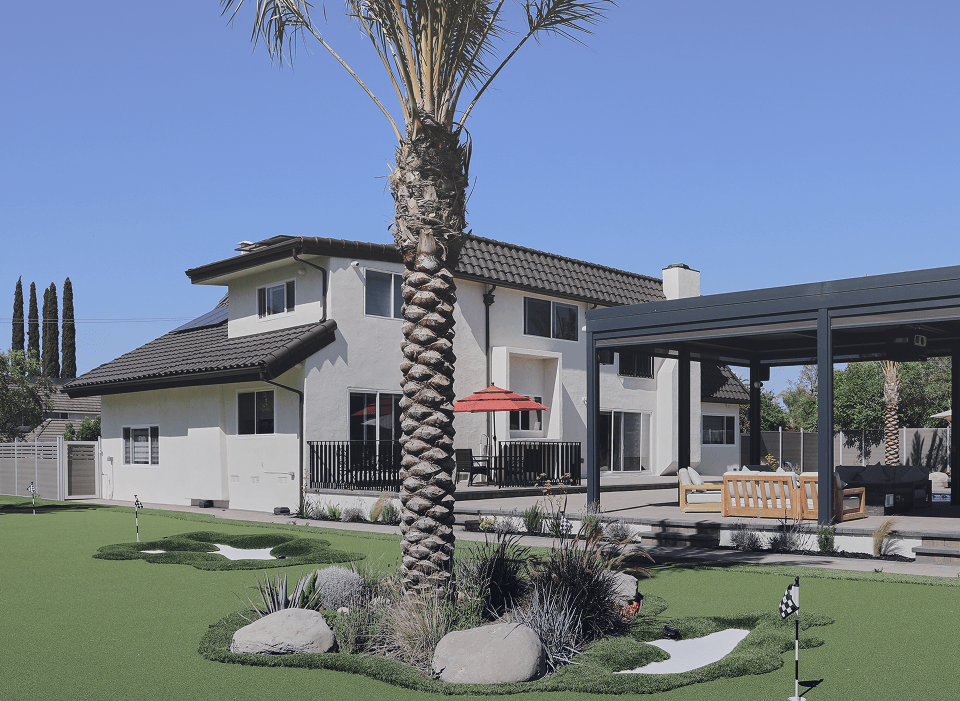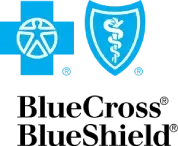
Medication Assisted Treatment (MAT) Explained
As the name suggests, this type of treatment uses FDA-approved medications for patient healing. Medication-assisted treatment is for supporting clients to get rid of substance use disorder and to facilitate drug urges and withdrawal side effects.
Scroll
MAT program represents a paradigm shift in how healthcare providers address substance use disorders. This advanced clinical strategy moves beyond historical perspectives that viewed addiction through a lens of willpower or moral failure, adopting instead a biomedical framework grounded in neuroscience. MAT approaches these conditions as treatable, chronic medical illnesses involving complex brain reward, motivation, and memory circuitry.
The methodology’s power lies in its integrated design, which fuses FDA-sanctioned pharmacotherapies with essential psychosocial interventions. By directly targeting the neurobiological and psychological drivers of addiction, this comprehensive model transforms recovery from a cycle of relapse into a sustainable process of healing and restoration.

What Is Mat Treatment?
Medication-assisted treatment (MAT) is a rigorously validated medical approach that strategically employs certain medications as a foundational element within a broader, individualized therapeutic regimen. Its principal objective is to counteract the neuroadaptive changes wrought by substance dependence, creating a platform of physiological stability from which deep psychological healing can occur.
The treatment operates by focusing on three pivotal mechanisms: reversing the brain alterations sustained from chronic use, suppressing the debilitating physical and psychological manifestations of withdrawal and craving, and erecting a neurochemical barrier that diminishes the reinforcing effects of substance use.
The profound effectiveness of MAT therapy is rooted in its synergistic nature. The pharmaceutical component addresses the acute somatic aspects of the disease, providing cognitive relief. This mental liberation is crucial, as it enables individuals to participate with focus and intention in tailored psychotherapeutic processes. It is within this therapeutic work that they confront the foundational trauma behind their use, reshape maladaptive behavioral patterns, and construct robust frameworks for a resilient future.
How MAT Works?
MAT program facilitates recovery by engaging multiple biological and psychological systems simultaneously:
Neurological Level
Addiction pathologically alters brain structure and chemistry. MAT medications help counteract these changes through:
- Receptor Regulation: Slowly reinstating standard operating function to neurotransmitter receptors affected by opioids or alcohol.
- Neurotransmitter Balance: Addressing dysregulation in key chemical messenger systems, including dopamine, glutamate, and GABA.
- Stress Response Normalization: Calming the heightened neural stress reactivity that powerfully triggers compulsive substance seeking.
Psychological Level
The medications create the stability required for psychological interventions to take root:
- Craving Reduction: Pharmacological agents significantly dampen the intensity and frequency of cravings, making them easier to manage cognitively.
- Cognitive Clarity: By resolving neurochemical chaos, MAT restores mental capacity, allowing patients to be fully present and participatory in therapy.
- Behavioral Reinforcement: The synergy between biological stability and psychological training helps cement new, healthy automatic behaviors and routines.
This coordinated multi-system engagement is the definitive reason MAT consistently delivers superior outcomes compared to approaches lacking a pharmacological component.
Medications Used in MAT
Medications for Opioid Use Disorder (Methadone, Buprenorphine, Naltrexone)
Methadone
- Primary Action: A long-acting full opioid agonist. It saturates opioid receptors to prevent withdrawal sickness and block the euphoric effects of other opioids.
- Clinical Protocol: Administered daily under direct observation within a highly structured, federally certified Opioid Treatment Program (OTP).
- Therapeutic Value: Regarded as a gold-standard intervention for long-standing, severe opioid addiction, demonstrated to cut the risk of fatal overdose dramatically.
- Important Notes: Requires careful, continuous medical supervision to ensure safety and therapeutic efficacy due to its potency.
Buprenorphine
- Primary Action: Functions as a partial opioid agonist. It provides enough receptor activation to suppress withdrawal and cravings but features a ceiling effect that limits respiratory depression and euphoria.
- Clinical Protocol: Can be prescribed by waivered physicians in office-based settings, often allowing for take-home doses, which supports patient autonomy and integration into daily life.
- Therapeutic Value: Offers a favorable safety profile with a lower potential for misuse compared to full agonists. Available in multiple formulations, including a monthly subcutaneous injection (Sublocade) that enhances adherence.
- Formulations: Sublingual tablets/films (Suboxone, Zubsolv) and a long-acting injection (Sublocade).
Naltrexone
- Primary Action: A pure opioid antagonist. It binds tightly to opioid receptors, completely preventing other opioids from producing any effect, including euphoria or respiratory depression.
- Clinical Protocol: Available as a daily oral pill or a more widely used monthly intramuscular injection (Vivitrol).
- Therapeutic Value: Non-addictive and non-narcotic. It poses no risk of diversion or misuse and serves as a powerful psychological safeguard.
- Critical Requirement: Mandates a full 7-10 day detoxification from all opioids before initiation to avoid precipitating severe withdrawal.
Medications for Alcohol Use Disorder (Acamprosate, Disulfiram)
Acamprosate
- Mechanism: Stabilizes glutamate and GABA systems disrupted by chronic alcohol use
- Benefits: Particularly effective for post-acute withdrawal symptoms
- Timeline: Typically started after detox completion
Disulfiram
- Mechanism: Creates unpleasant reactions if alcohol is consumed
- Role: Serves as a psychological deterrent rather than treating cravings
- Considerations: Requires strong motivation and supervision
Naltrexone
- Mechanism: Reduces alcohol’s pleasurable effects through opioid receptor blockade
- Benefits: Can help reduce heavy drinking days by 50%
- Administration: Available in both oral and injectable forms
Combining Medications with Therapy
The true power of Medication-Assisted Treatment isn’t in the medication or the therapy alone—it’s in how they work together. The medicine gives you the stability to focus. The therapy gives you the skills to heal.
- Cognitive Behavioral Therapy (CBT) gives you the tools to rewrite the mental scripts that you automatically use. You learn to spot the trigger, pause, and choose a different ending.
- Motivational Interviewing (MI) is a conversation where we help you uncover your own reasons for getting better. We know that change only lasts when it comes from you, not from us.
- Contingency Management (CM) is about celebrating the wins. We believe in positive reinforcement, so we make sure that your hard work, like passing a drug screen, is recognized and rewarded, building momentum for your recovery.
- Family Therapy is about healing the ripple effects of addiction. It provides a safe space to repair broken trust and learn to communicate again, strengthening the support system you’ll need for the long haul.
Benefits of Our MAT Program
Our approach is built on a simple idea: your recovery should fit your life, not the other way around. We’ve designed our program without a one-size-fits-all model, focusing instead on adaptable, whole-person care.
Care Built Entirely Around You
Your journey starts with a deep-dive assessment. We don’t just look at your addiction; we look at you. This helps us craft a plan that chooses the right medication and dosage for your body and pairs it with therapies that address your specific history and goals. Your plan isn’t static, we adjust it with you as you grow.
A Single Team for All Your Needs
We break down the walls between different types of care. Your therapist talks to your doctor, who is aware of your overall health. This means we can seamlessly manage co-occurring issues like anxiety or depression alongside your addiction treatment. Plus, you’ll have a dedicated guide to help you navigate obstacles outside our walls, from finding stable housing to tackling legal paperwork.
Treatment That Adapts to Your World
We know you have a life to live. That’s why we offer flexibility in how you receive care. Choose from different medication schedules and a mix of therapy styles (one-on-one, group, or family sessions) that work with your responsibilities. Whether in-person or through telehealth, we ensure consistent support is always within reach.
The MAT Treatment Process
Medication-Assisted Treatment program follows a carefully structured progression tailored to your unique needs. From initial assessment to long-term maintenance, each phase builds on the last to create lasting recovery.
- Comprehensive Evaluation & Personalized Planning (Days 1-3)
Your journey begins with a thorough medical and psychological assessment. Our team reviews your substance use history, physical health, and mental health needs to create a customized treatment plan. We consider everything from medication options to therapy approaches that will work best for your situation.
Key components:
- Complete medical evaluation including lab work
- In-depth psychosocial assessment by licensed clinicians
- Collaborative treatment planning with our multidisciplinary team
- Medication Initiation & Stabilization (Weeks 1-4)
During this critical phase, we carefully introduce medications while monitoring your response. Our medical team adjusts doses gradually to ensure safety and effectiveness, helping you achieve stability with minimal discomfort.
What to expect:
- Daily or weekly medical check-ins at first
- Ongoing medication adjustments based on your symptoms
- Introduction to therapy and support services
- Active Treatment & Skill Building (Months 1-6)
With medication managing physical cravings, you’ll focus on developing coping skills and addressing the root causes of addiction. Regular therapy sessions help you build a toolkit for lasting recovery.
Treatment includes:
- Individual and group therapy sessions
- Case management for real-world challenges
- Regular progress evaluations
- Long-Term Maintenance & Community Reintegration
Recovery continues long after initial treatment ends. We provide ongoing support to help you maintain progress and rebuild your life.
Ongoing care options:
- Continued medication management as needed
- Relapse prevention planning
- Alumni support programs
Specialized tracks available for:
- Pregnant patients
- Adolescents
- Those with chronic pain
This structured approach ensures you receive the right level of care at each stage of recovery, with flexibility to adapt as your needs change.
How Long Does MAT Last?
The length of Medication-Assisted Treatment is a personal decision, varying based on individual needs and circumstances.
What Influences Duration:
Health Factors: The length and intensity of the addiction are major factors. Those with long-term, high-dose opioid use often see the best results with extended or lifelong MAT. Other health issues, like chronic pain or mental health diagnoses, usually mean longer treatment is beneficial.
Personal Factors: Your own goals are central—some prefer maintenance, others a gradual taper. Your living situation, job, and support network also impact how long medical support is helpful.
Common Timeframes:
Evidence and experience suggest:
- Medium-term (1-3 years): This suits most people, allowing for deep stabilization and psychological work.
- Long-term/Open-ended (3+ years): This is most effective for chronic or complex cases, providing the highest rates of long-term stability and functional improvement.
How to Find Medication Assisted Treatment Near Me
MAT Program: FAQ
What Is MAT Treatment?
What Drugs Are Used for MAT?
What Does MAT Stand For?
Is the MAT Program Worth It?
Sources
- American Addiction Centers. (2025, February 28). Addiction medications used in treatment. Retrieved September 9, 2025, from https://americanaddictioncenters.org/addiction-medications
- Carter, M., Boyd, J., Bennett, T., & Baus, A. (2023). Medication assisted treatment program policies: Opinions of people in treatment. Journal of Primary Care & Community Health, 14, 1–7. https://doi.org/10.1177/21501319231195606
- Illinois Department of Public Health. (n.d.). Medication assisted treatment (MAT) for opioid use disorder: Frequently asked questions. Retrieved September 9, 2025, from https://dph.illinois.gov/topics-services/opioids/treatment/mat-faq.html
- Leshner AI, Mancher M, eds. Medications for Opioid Use Disorder Save Lives. National Academies Press; 2019. [PubMed] [Google Scholar]
- Texas Health and Human Services. (n.d.). Adult substance use: Medication-assisted treatment. Retrieved September 9, 2025, from https://www.hhs.texas.gov/services/mental-health-substance-use/adult-substance-use/adult-substance-use-medication-assisted-treatment












